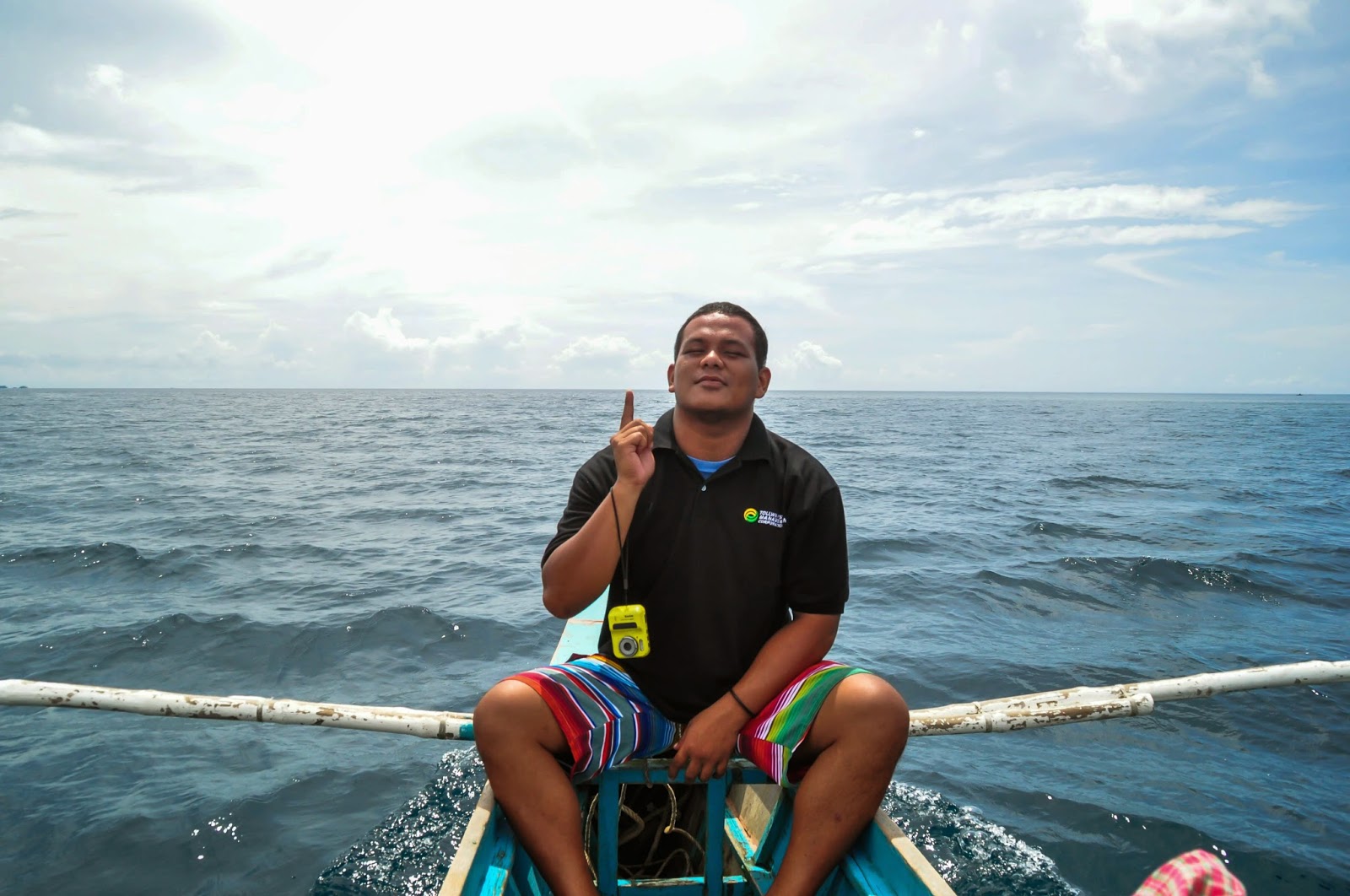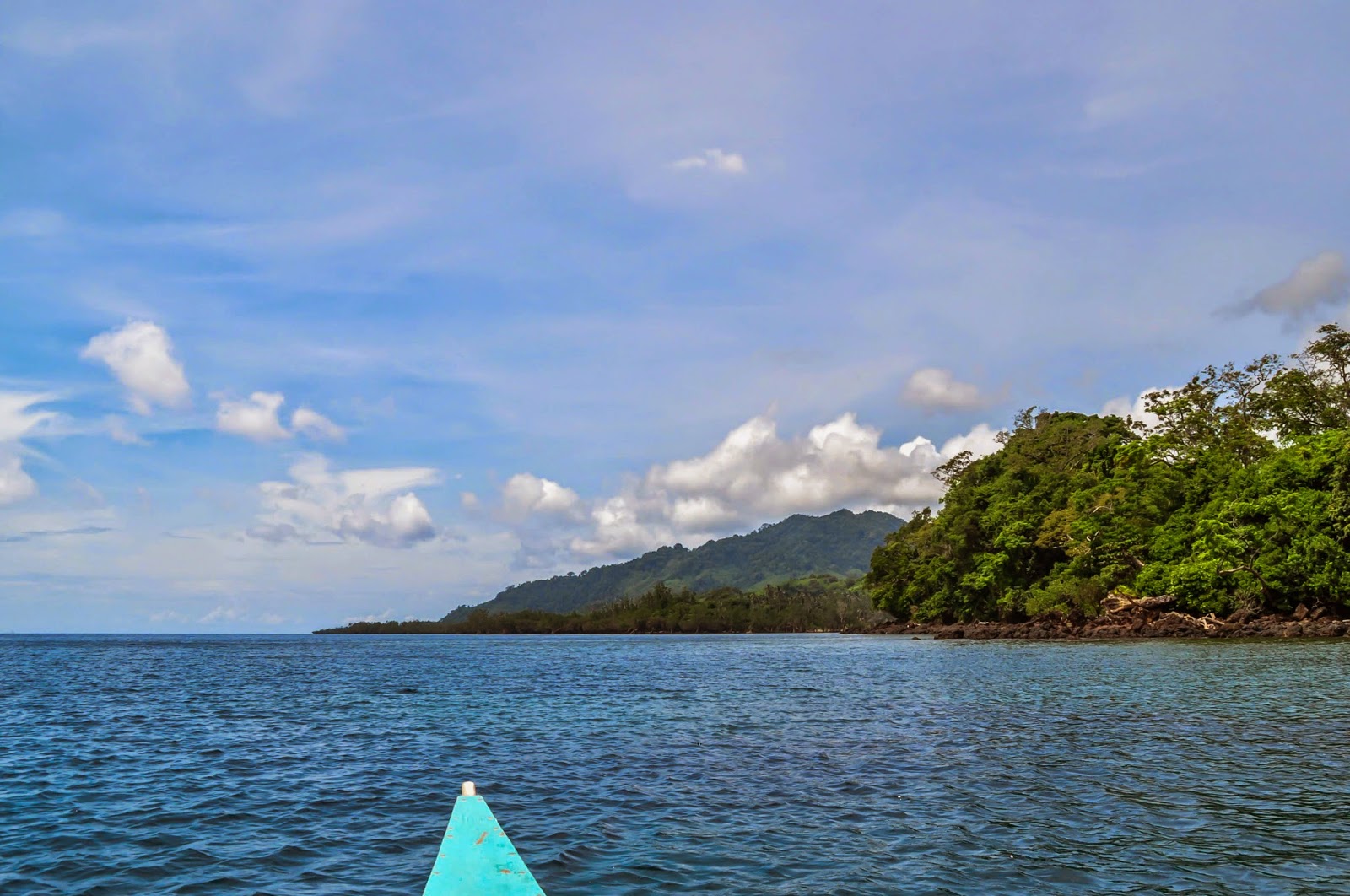It was a long time wish for me to visit the Cape Melville Lighthouse ever since I've been going to Balabac. I didn't have the luck during my first two visits to the island. Since there was no road going there, a hike through the jungle wasn't my options back then. The total land area of Balabac is around 582 km², and Cape Melville is located on the south of the island which is approximately 25 kilometres away from the town centre. My brother-in-law said that it would take at least a whole day to hike there. I've asked about a possibility of renting a boat, so he arranged for us with the neighbour's small boat to take us there. My two nephews and niece were quite game for the adventure, so they enthusiastically came along.
It took us more than 3 hours to go there on a bit rough the Sulu Sea. It was windy, and we, unfortunately, had to navigate against the wind and the waves. But the magnificent green scenery made up for this. We docked on a beachside community of the Molbog people, an Islamized indigenous people who mostly live in the islands of southern Palawan.
It was a highlight for me seeing the imposing structure even from afar. It is definitely an architectural gem. The Melville Lighthouse was constructed by the Spaniards to light Balabac Strait as part of their extensive lighting plan for the archipelago. The construction began in 1818 and took 74 years to finish. It was first lit on August 30, 1892
We had to go on a short hike to the lighthouse as it was located on top of a hill in the middle of a field and through coconut grove and thicket.
The old structure was already retired and replaced by a new white lighthouse beside it. There was coastguard personnel manning the area, and we were actually questioned on our purpose of coming up there to the lighthouse. We were just there to see the old lighthouse. I guess the coastguard was not convinced and repeated the same question a couple more times. I cannot blame him since there were not indeed many people who are interested in cultural heritage who come to this place just too look around. I've tried to explain to him that it was my longtime wish to see the lighthouse, and that I'm only a traveller with my nephew and niece in tow and that I don't live in the country anymore. I didn't know if that made any sense to him. Eventually, Ate Anita Favila, the wife of the caretaker, Mr Jaime Favila knew my sister from town and gladly showed us around. The couple has been a caretaker of the structure for over 25 years. Unfortunately, they have not been given any reasonable salary, and they can only do as much. Kudos to the caretakers of this fascinating historical and cultural structure. I can see that if this would be renovated and adequately taken care of, it could be a great tourist and educational destination. Coupled with the many islands and beautiful beaches around, the Municipality of Balabac would definitely profit from it.
Filipinos love urban legends. One story that proliferated about the lighthouse was that for the five pillars of the tower to stand, five natives were cemented alive while holding the posts! It is as ridiculous as it sounds, but genuinely many people were very impressionable and believed it. No one knows the truthfulness of this story. We were not able to go up to the tower since the stairs were slowly deteriorating and it would not be advisable to ascend for safety reasons, so we contented ourselves on the ground taking pictures. It was a bit sad noting the lousy state of the place. There is nothing really been done about the upkeep.
After a while, we had enough and so decided to go back to town. The boat ride took us another 3 hours, but it was better because we navigated in the direction of the wind. It was indeed an adventure.
It took us more than 3 hours to go there on a bit rough the Sulu Sea. It was windy, and we, unfortunately, had to navigate against the wind and the waves. But the magnificent green scenery made up for this. We docked on a beachside community of the Molbog people, an Islamized indigenous people who mostly live in the islands of southern Palawan.
It was a highlight for me seeing the imposing structure even from afar. It is definitely an architectural gem. The Melville Lighthouse was constructed by the Spaniards to light Balabac Strait as part of their extensive lighting plan for the archipelago. The construction began in 1818 and took 74 years to finish. It was first lit on August 30, 1892
We had to go on a short hike to the lighthouse as it was located on top of a hill in the middle of a field and through coconut grove and thicket.
The old structure was already retired and replaced by a new white lighthouse beside it. There was coastguard personnel manning the area, and we were actually questioned on our purpose of coming up there to the lighthouse. We were just there to see the old lighthouse. I guess the coastguard was not convinced and repeated the same question a couple more times. I cannot blame him since there were not indeed many people who are interested in cultural heritage who come to this place just too look around. I've tried to explain to him that it was my longtime wish to see the lighthouse, and that I'm only a traveller with my nephew and niece in tow and that I don't live in the country anymore. I didn't know if that made any sense to him. Eventually, Ate Anita Favila, the wife of the caretaker, Mr Jaime Favila knew my sister from town and gladly showed us around. The couple has been a caretaker of the structure for over 25 years. Unfortunately, they have not been given any reasonable salary, and they can only do as much. Kudos to the caretakers of this fascinating historical and cultural structure. I can see that if this would be renovated and adequately taken care of, it could be a great tourist and educational destination. Coupled with the many islands and beautiful beaches around, the Municipality of Balabac would definitely profit from it.
Filipinos love urban legends. One story that proliferated about the lighthouse was that for the five pillars of the tower to stand, five natives were cemented alive while holding the posts! It is as ridiculous as it sounds, but genuinely many people were very impressionable and believed it. No one knows the truthfulness of this story. We were not able to go up to the tower since the stairs were slowly deteriorating and it would not be advisable to ascend for safety reasons, so we contented ourselves on the ground taking pictures. It was a bit sad noting the lousy state of the place. There is nothing really been done about the upkeep.
After a while, we had enough and so decided to go back to town. The boat ride took us another 3 hours, but it was better because we navigated in the direction of the wind. It was indeed an adventure.


























































